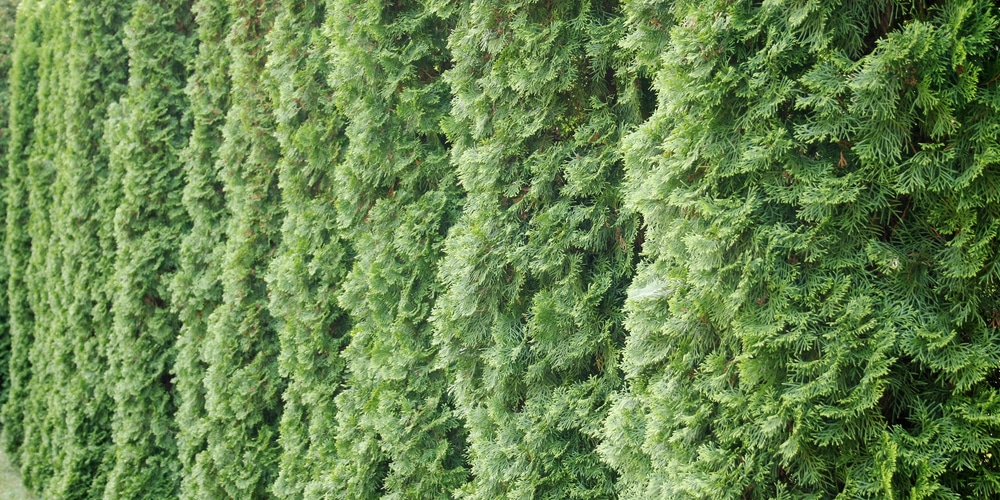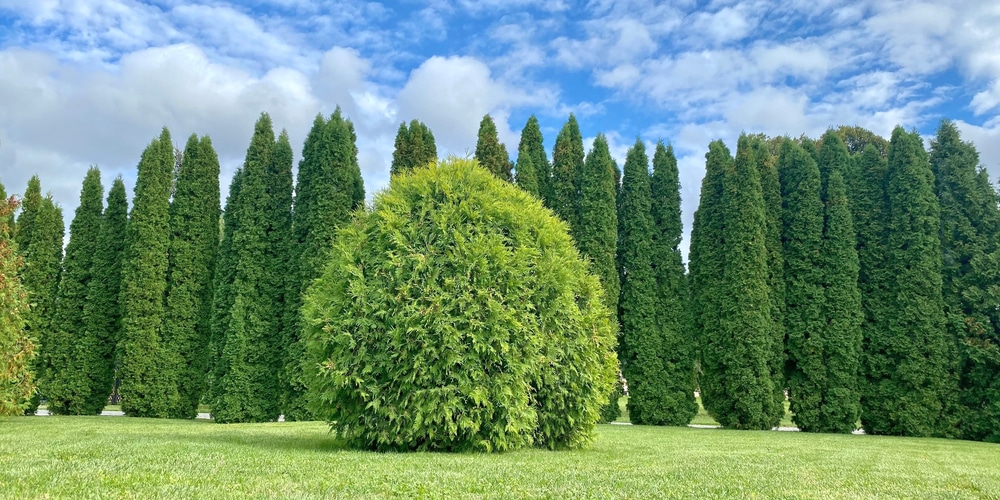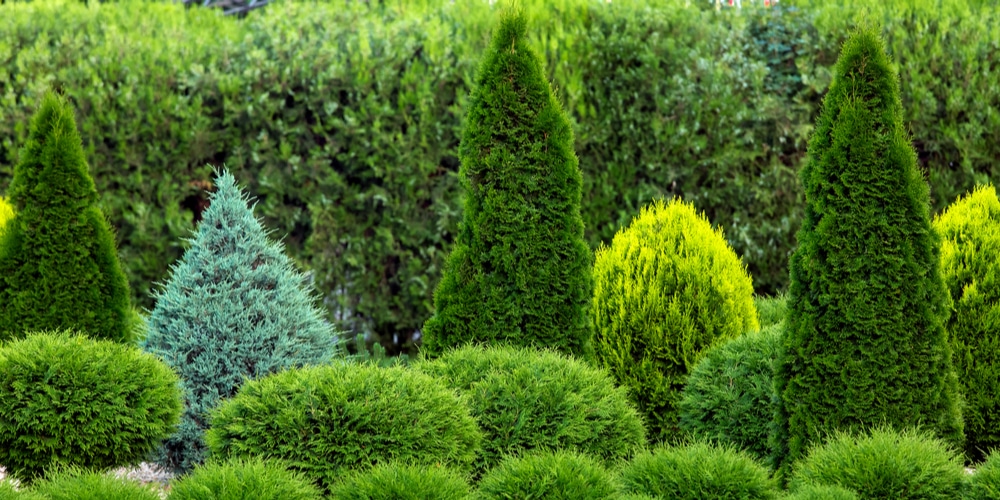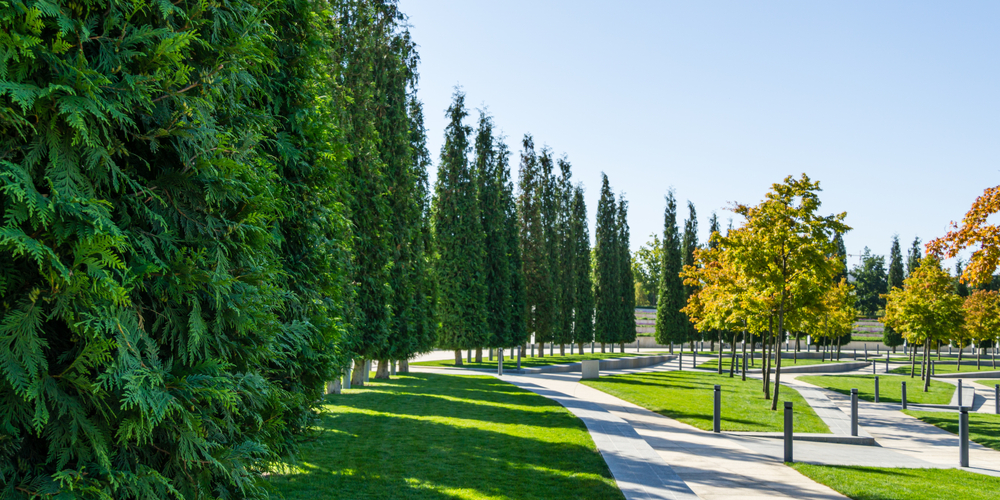Trees in the wild will usually have to make do with the soil they’re in, nutrient-wise. For those who have an Arborvitae in their yard or landscape, fertilization ensures that the plant grows strong, healthy and not lacking their building blocks.
What’s the best kind of arborvitae fertilizer, and when should you apply it? More importantly, how should you apply it to get optimal results?
When and When You Should Not Apply Arborvitae Fertilizer
Fertilizing an Arborvitae is usually done when the tree is entering its growing season. For most owners this happens from spring through fall.
Fertilizers, when done right, will boost the soil nutrients around the arborvitae and invigorate it. Alongside watering and sunlight, the tree will have everything it needs to grow and thrive.
However, there are some instances where you should not apply fertilizer to a plant. Generally speaking, it’s not recommended that you feed a tree that looks sick.
Doing so may lead to worse things, such as harming or even killing the shrub or tree. Find and address the issue first- it could be that the soil is too wet, or that you’re watering too much or too little.
Make sure to change the environment the arborvitae is in, or your watering habits before reaching for the fertilizer.
It’s also worth noting that young arborvitae trees and transplants do not need feeding. Saplings will have tender roots that are quite sensitive to nitrogen and other fertilizer nutrients, and the same applies to newly-transplanted arborvitae.
You should wait until the second or third year to start fertilizing them so the roots are established and can handle the compounds.
As an alternative to granular or commercial fertilizer, you can use organic matter or a soil that already has the nutrients for speedy growth. These are gentler on the roots and usually break down and feed your young arborvitae over time.
Arborvitae will benefit from a once-a-year feeding when spring comes and when all risk of frost subside. Fertilizing in fall or winter won’t have the intended effect- the new growth will likely be clipped by the frost and you’ll have wasted your efforts. It’s recommended that you stop fertilizing roughly a month before the first frost date.
What Fertilizer Can You Use on Arborvitae?
Arborvitae are vigorous growers and come back every year when they’re within the recommended zones. They need little help and grow to full extent when exposed to the right conditions.
Simple is best for arborvitae fertilization. Typically, you can use a nitrogen product if you know that the soil the tree is growing in still contains trace minerals. Otherwise, you’ll want to go for a well-balanced mix of nitrogen, phosphorus and potassium (NPK).
Most nurseries or garden centers will have a complete fertilizer product you can use for your arborvitae. If you truly want the best then it’s recommended that you get a slow-release granular variety that’s specifically for arborvitae trees.
Slow release eliminates the need to constantly fertilize in a growing season, as the nitrogen content will be sent to the surrounding soil over time. This also reduces the risk of fertilizer burn on the roots and will be gentler for your arborvitae in the long run.
In finding slow release fertilizers you’ll want to get a product that has around 50% nitrogen. Arborvitae grow very quickly and they need to have a constant supply of nutrients in their growing medium to support this.
Alternatively, you can resort to organic fertilizer so you won’t leave any salt residue on the ground. Fish emulsion or well-composted manure are just a few of nitrogen-rich examples, and you can research other kinds that work well with arborvitae trees.
How Do You Apply Arborvitae Fertilizer?
The first steps to fertilizing your arborvitae is to wait until the spring season and have your slow release fertilizer on hand.
Take stock of your tree and see if it needs feeding. If the leaves and stems are robust and it grows at a fast rate, then there’s probably no need to apply fertilizer. The same goes for mature arborvitaes that are three years old or greater.
You will most likely need to fertilize if your arborvitae is in close proximity to other shrubs or trees. If planted in a row or hedge then it can definitely use a feeding.
Feeding arborvitae is a simple exercise. Read the label the fertilizer came in with so you know how much to apply. This eliminates the guesswork required, as too little won’t have an effect, while too much can cause root damage and affect the appearance of your tree.
It’s recommended that you broadcast the right amount near the plant’s root zone while keeping a good distance away from the trunk. As a general rule, you can place the fertilizer on the ground at the outermost edges of the foliage and in a circle.
Distribute the fertilizer evenly, then prepare the hose for watering. You’ll want to soak the ground so that the granules dissolve to the soil where the arborvitae’s roots are. Afterwards, you can wait until the next growing season and start the process again.
It’s worthy to note that some arborvitae species may require more fertilizing. In this case, you may want to move away from slow-release granules and opt for regular ones instead. This way you won’t overlap the feeding period and your arborvitae tree’s roots stay safe.
You’ll know when you’ve fed your arborvitae right when the foliage appears healthy and the tree is growing quickly. Remember, mature arborvitae won’t need as much fertilizer, and the same goes for the young saplings and transplants. Also, you shouldn’t feed sick trees or trees with brown leaves as they tend to get worse.
Arborvitae Fertilizing Tips
Arborvitae generally only need a single feeding per growing season, and it can be done as soon as spring arrives. When feeding your tree you should always wear a face mask and protective gloves to prevent the chemical from being absorbed in your skin. Water thoroughly so the soil absorbs all of the granules.
Related Article: How Fast Does Arborvitae Grow?



